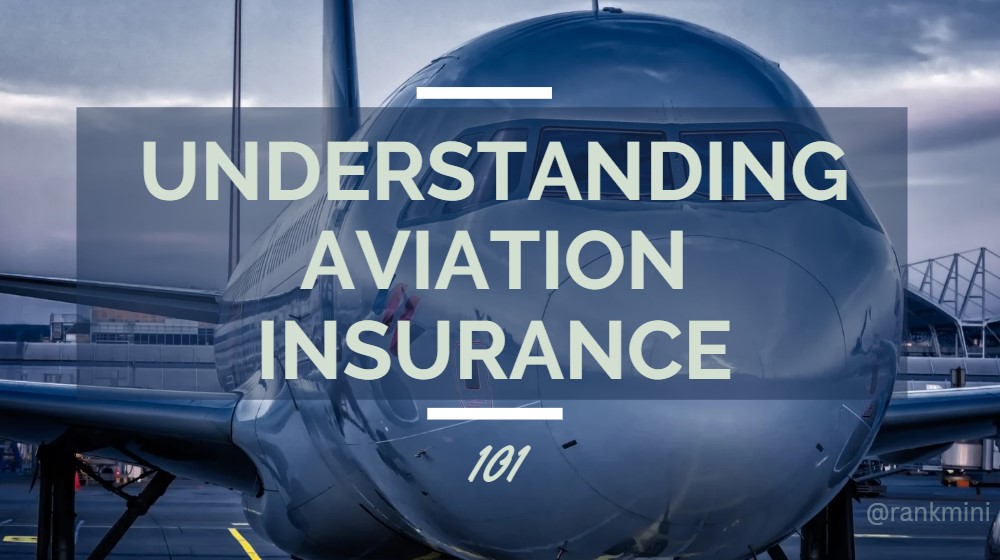Aviation insurance is a crucial aspect of the aviation industry, providing financial protection against a myriad of risks associated with flying. Whether you’re a commercial airline operating a large fleet or a private pilot enjoying weekend leisure flights, aviation insurance offers peace of mind against potential mishaps.Consider this: an aircraft accident, regardless of magnitude, can lead to staggering repair costs and potential liabilities that could financially cripple an individual or company. Aviation insurance is designed to protect operators from these unforeseen events and is essential for:
- Risk Management: It helps in managing operational risks and potential liabilities effectively.
- Safety Assurance: A well-structured aviation insurance plan ensures that operators can focus on maintaining safe operations without the constant stress of potential financial repercussions.
- Regulatory Compliance: Many jurisdictions require certain types of aviation insurance for operations, making it a legal necessity.
Types of Aviation Insurance Coverage
Understanding the different types of aviation insurance coverage available is vital for any stakeholder in the industry. Here are some key policy types:
- Hull Insurance: Covers physical damage to the aircraft, such as damages from accidents, fire, or theft. Think of it as a safeguard against devastating repair expenses.
- Liability Insurance: Protects against claims arising from bodily injury or property damage caused by the aircraft, ensuring financial coverage in case of unfortunate incidents.
- Passenger Liability Insurance: Specifically covers injuries to passengers, providing critical compensation for medical expenses in case of accidents.
- Cargo Insurance: Essential for businesses that transport goods, covering damages or losses during transit.
- Personal Accident Insurance: Designed for pilots and crew, this coverage promises financial support in the event of injury or accidental death.
Understanding these coverages not only aids in compliance but also ensures a tailored approach to safeguarding aviation operations, ultimately promoting security and stability within the industry.
Factors Affecting Aviation Insurance Premiums
Aircraft Type and Usage
When it comes to aviation insurance premiums, the type and usage of the aircraft play a pivotal role in determining costs. High-performance jets, helicopters, and experimental aircraft generally command higher premiums due to their elevated risk profiles. For instance, consider a sleek Gulfstream G650 compared to a humble Cessna 172 used mainly for flight training; the former will incur a steeper insurance cost mainly due to its complex systems and higher market value.In addition to the aircraft type, how it is utilized also influences the premium. Here are a few usage patterns that insurers carefully evaluate:
- Commercial Operations: Airlines and cargo planes typically face increased insurance costs due to larger passenger capacity and higher stakes during operations.
- Private Use: Individuals flying for recreation, while still considered risky, often have different rate structures compared to commercial flights.
The more complex and high-risk the application (such as air ambulances), the higher the insurance premium is likely to be.
Pilot Experience and Training
Pilot experience is another critical component that impacts aviation insurance premiums. Insurers assess a pilot’s flight hours, certifications, and incident history. A seasoned pilot with thousands of hours logged is generally seen as a lower risk than a newly certified aviator. This is evident in the following ways:
- Flight Hours: More experienced pilots receive better rates.
- Ongoing Training: Pilots dedicated to regular simulator sessions and safety protocols can demonstrate commitment to risk management, positively affecting premiums.
Imagine a small airline with a pilot who regularly updates their training. They not only display commitment but have a significantly lower risk of incidents, which can translate to more favorable insurance terms. Conversely, a lack of experience can raise costs considerably. Ultimately, both aircraft type and pilot expertise intricately weave into the fabric of aviation insurance premiums, creating a personalized cost structure that reflects the unique nature of each flying operation.
Understanding Aviation Insurance Policies
As the discussion on aviation insurance unfolds, it’s essential to understand the types of policies available that provide comprehensive protection for aircraft operators. Two of the most critical coverage types are Hull Insurance and Liability Insurance, each designed to address specific risks associated with aviation.
Hull Insurance
Hull Insurance is crucial for aircraft owners, as it covers physical damage to the aircraft itself. This coverage extends to various situations, including:
- Accidental Damage: Whether during takeoff, landing, or in-flight, if an incident occurs, hull insurance kicks in.
- Natural Disasters: For example, if a private jet sustains damage from a hailstorm, hull insurance covers the repair costs, ensuring that the aircraft is back in operation swiftly.
- Theft or Vandalism: Should an aircraft be stolen or vandalized, this insurance provides financial protection against such losses.
This policy is particularly vital for airlines and private plane owners, safeguarding their valuable investments against unforeseen circumstances.
Liability Insurance
Liability Insurance complements hull insurance, offering protection against claims arising from bodily injury or property damage caused by the aircraft. This includes:
- Bodily Injury: If an aircraft accident results in injuries to passengers or individuals on the ground, liability insurance covers medical expenses, legal fees, and compensation.
- Property Damage: For instance, if a small plane accidentally crashes into a building, this insurance would address the resulting damages and claims.
Having robust liability coverage is not just a regulatory requirement for many operators, but also a way to ensure peace of mind. Aviation insurance is multifaceted, ensuring that those in the industry are well-prepared for an assortment of risks and challenges that may arise during operations.
Calculating Aviation Insurance Premiums
Calculating aviation insurance premiums involves a careful evaluation of various factors that contribute to the overall risk associated with insuring an aircraft and its operations. Understanding these factors can help aircraft owners and operators make informed decisions regarding their insurance coverage.
Premium Factors for Aircraft Hull Insurance
When it comes to hull insurance, several key elements influence premium calculations:
- Aircraft Type and Value: The type of aircraft plays a significant role. For instance, a vintage biplane will often incur different premiums compared to a modern corporate jet; usually, the higher the value, the higher the premium.
- Usage: The intended use of the aircraft—whether for commercial purposes, personal recreational flying, or specialized activities like aerial photography—also affects premiums. Commercial operators may face higher rates due to increased operational risks.
- Geographical Area: Operating in regions prone to natural disasters or high-traffic airspace can lead to increased premiums. For example, an aircraft frequently flying in mountainous or stormy areas may be at greater risk.
- Pilot Record: The qualifications and experience of the pilot can significantly impact the premium. Insurers often prefer well-trained pilots with clean flight records, viewing them as less risky.
By comprehensively evaluating these factors, insurers determine the hull insurance premium tailored to the specific aircraft and its circumstances.
Premium Factors for Liability Insurance
Liability insurance, crucial for protecting against potential legal claims, also sees its premiums shaped by several variables:
- Coverage Limits: Higher coverage limits for passenger and third-party liability will naturally result in higher premiums. A commercial airline, for example, seeking extensive liability coverage will pay more compared to a general aviation pilot.
- Claims History: An operator with a history of frequent claims may face increased premiums. Conversely, an excellent safety record can lead to lower rates.
- Operational Safety Measures: Insurers often evaluate whether operational safety protocols are in place. Companies investing in safety training and advanced technology may qualify for discounts, recognizing their reduced risk profile.
- Geographical Exposure: The area of operation can significantly influence liability coverage costs. Operations in regions with civil unrest or high accident rates tend to see higher premiums.
Understanding these premium factors can ultimately guide aircraft owners and operators in making choices that balance coverage needs with financial considerations.
Choosing the Right Aviation Insurance Provider
Choosing the right aviation insurance provider can feel like navigating through a maze of options and coverage types. It’s crucial to find a provider who not only meets your insurance needs but also offers a strong reputation and reliability. Let’s explore some of the top aviation insurance companies and key considerations to keep in mind during your selection process.
Top Aviation Insurance Companies
Here are a few industry leaders renowned for their expertise and comprehensive coverage options:
- AIG Aviation: A well-established name providing a wide array of aviation insurance solutions for both private and commercial operators.
- Global Aerospace: Known for its extensive network and strong financial backing, offering customized policies that cater to different aviation segments.
- Berkshire Hathaway: With an impressive track record, this provider delivers tailored insurance products and robust claims support.
These companies have built their reputations on delivering excellent customer service and prompt claims handling.
Key Considerations when Selecting an Insurance Provider
When selecting an aviation insurance provider, consider these essential factors:
- Coverage Options: Ensure the provider offers the specific coverage types you need, such as hull insurance and liability insurance.
- Financial Stability: A provider’s financial health is critical. Look for companies with strong solvency ratios and positive combined ratios to gauge their ability to handle claims.
- Claims Process: Investigate the efficiency and transparency of their claims handling process. You want a provider that resolves claims smoothly and promptly.
- Customer Service: Assess their responsiveness and support. A provider that’s unreachable during a crisis can lead to significant operational challenges.
By weighing these factors, you can confidently select an aviation insurance provider that aligns with your unique needs and offers peace of mind as you take to the skies.

